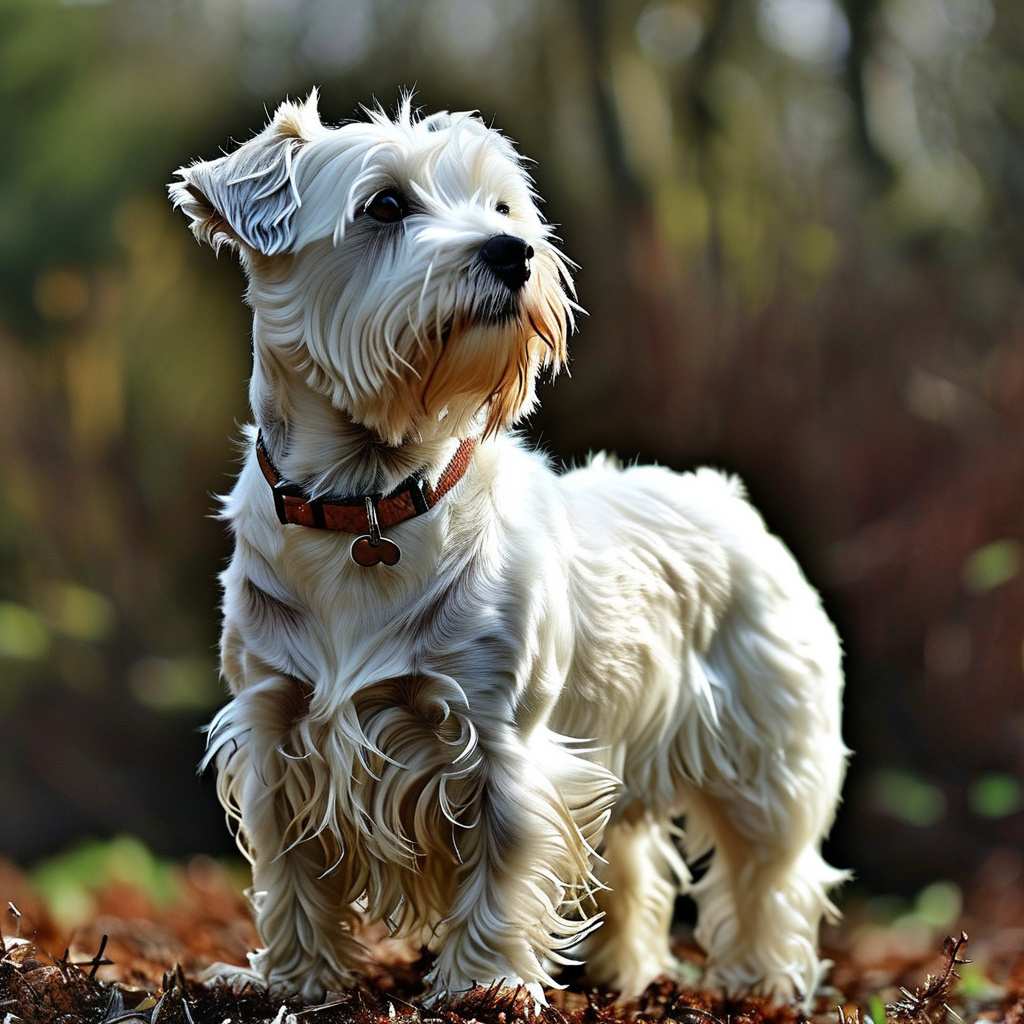
Introduction:
The West Highland White Terrier, or “Westie,” is a small but spirited dog breed with roots in the rugged West Highlands of Scotland. Known for its distinctive white coat and energetic demeanor, this breed is a charming and loyal companion. Westies are intelligent, lively, and sometimes stubborn, making them well-suited to active families who can match their enthusiasm. While they’re easy to love, caring for a Westie requires attention to their grooming needs, health considerations, and training, all of which help ensure that these adorable dogs thrive in any environment.
Related Post: Caring for Your Pregnant Cat: Essential Tips for a Healthy Pregnancy and Kittens
I was wondering where this West Highland White Terrier breed actually comes from.
The West Highlands is the name of a stunning mountainous region in northern Scotland. The West Highland White Terrier hails from this region and was bred in the latter half of the 19th century. You’ll often hear it called a Westie. It’s a very energetic dog, full of life and always up for a game of fetch.
This dog may look small, but it has a big personality and is quite stubborn, so it’s not for everyone.
Related Post: The Energetic and Stubborn Yorkshire Terrier: A Complete Guide
 The West Terrier has a solid build, even though it’s on the small side. It has a short back, thick neck, very strong loins, and a long (13-15 cm), straight tail. The black nose and eyes are a nice contrast to the other colours. It has eyes that stand out with a very smart, inquisitive look.
The West Terrier has a solid build, even though it’s on the small side. It has a short back, thick neck, very strong loins, and a long (13-15 cm), straight tail. The black nose and eyes are a nice contrast to the other colours. It has eyes that stand out with a very smart, inquisitive look.
His coat has two layers: a hard top coat that’s about 5 cm long and a thick, soft undercoat.
Dogs of this breed reach the withers at around 25-30 cm (male) and 23-28 cm (female). Their standard weight varies between 7-10 kg (male) and 6-7 kg (female). They only appear in their characteristic white colour.
Westies, like Schnauzers, shouldn’t be cut or shaved because it ruins the structure of their fur. It’s not easy to get it into good condition after such improper treatment.
If you want your dog’s fur to be as white and shiny as it looks in shows or ads, be prepared to put in a lot of effort. These dogs really love going for walks, and that often means getting muddy. It’s important to give your dog a thorough clean every time it gets dirty to keep its bright colour.
As with other small breeds, they can develop tartar, so it’s important to teach your puppy to be patient with the necessary hygienic treatments.
If Westies aren’t fed the right diet, they often end up with yellow fur. It’s worth choosing the right food for this breed.
Related Post: Should We Let Our Cat Outside? Understanding the Risks and Benefits for Urban Cats
 As for how long these dogs usually live, it’s thought they can make it to about 12 to 16 years on average. They’re small but healthy, but they can get sick:
As for how long these dogs usually live, it’s thought they can make it to about 12 to 16 years on average. They’re small but healthy, but they can get sick:
1. Skin allergies, Eye diseases, Food intolerances (especially to cereals)
4. Heart defects
5. Genetic deafness
Diabetes mellitus
Cataracts
It’s worth noting that this breed is not completely free of allergies. Unfortunately, that’s not the case. Hair isn’t the only allergen. In fact, it’s often the saliva of dogs that causes problems for allergy sufferers, and the fact that these terriers don’t shed hair doesn’t make them any less of a problem.
Westies often gain weight. Overfeeding isn’t good for anyone, and it’s tough to get rid of excess weight.
Character: Westies are the most socialized and cheerful of all Scottish terriers. If you’ve ever seen Asterix and Obelix, you’ll surely remember Idefix. A small, friendly, intelligent, energetic, cheerful little dog who is always on the go and loves to play. That’s what West Highland White Terriers are like.
Related Post: The Unique Charm of Thai Cats: A Return to the Original Siamese Look
 Of course, it depends on the dog. They all have their own character. Some love kids, while others are more introverted. One thing they all have in common, though, is that they’re very loyal and very affectionate towards their owners. Westies are also very stubborn, like other terriers. It’s fair to say that their training never stops. He likes to be in charge, and without proper training, he can be quite loud and hoarse compared to other dogs. If you want to get a better idea of what your dog is like, it’s a good idea to visit the breeder, meet Westie’s parents, and find out a bit about his grandparents. It’s especially important to pay attention to socialization when it comes to these breeds because breeders often overlook it. The effects of this can be seen throughout a dog’s life.
Of course, it depends on the dog. They all have their own character. Some love kids, while others are more introverted. One thing they all have in common, though, is that they’re very loyal and very affectionate towards their owners. Westies are also very stubborn, like other terriers. It’s fair to say that their training never stops. He likes to be in charge, and without proper training, he can be quite loud and hoarse compared to other dogs. If you want to get a better idea of what your dog is like, it’s a good idea to visit the breeder, meet Westie’s parents, and find out a bit about his grandparents. It’s especially important to pay attention to socialization when it comes to these breeds because breeders often overlook it. The effects of this can be seen throughout a dog’s life.
He’ll fit right in in a big house or a small apartment, but because of his short paws, it’s not a good idea to let him climb high floors, especially when he’s a puppy. He’ll love having access to green spaces, so a garden will be perfect for him. It’s a bit less of an issue for us, though, if we have a pet that likes to help us with gardening and digging up beds.
Here are a few interesting facts about Westies:
The famous Idefix, Obelix’s dog, was a West Highland White Terrier.
Some famous breeders of these dogs include Karol Darwin, Alfred Hitchcock, and Pablo Picasso.
Westies have even been used in TV commercials, like on the Black and White whisky label or in the Renault advertising campaign.
The average litter has three to five puppies, but the record-breaking female of 2012, Isobel, was able to welcome up to 11.
West Highland White Terriers are very friendly dogs, and they make great companions. Living with them is sure to be fun and adventurous. However, before making your final decision, it’s a good idea to think about all the advice above and whether it’s right for you and your lifestyle.
Conclusion:
West Highland White Terriers are affectionate, playful, and strong-willed dogs that bring joy and energy to their families. Their cheerful nature and loyalty make them great companions, though they require consistent training and careful grooming to keep them healthy and happy. With a lifespan of 12 to 16 years, Westies are typically healthy dogs but can face common health issues such as skin allergies and weight gain. Before bringing a Westie into your home, it’s important to consider their active lifestyle and grooming needs, ensuring they fit well with your routine and space.
FAQs:
- Where does the West Highland White Terrier breed come from?
The breed originates from the West Highlands in northern Scotland, where it was bred in the late 19th century. - What makes the West Highland White Terrier’s coat unique?
Westies have a double-layer coat: a hard topcoat around 5 cm long and a soft, thick undercoat. Their fur requires regular grooming to maintain its white, shiny appearance. - How big do West Highland White Terriers get?
Males reach 25-30 cm at the withers and weigh 7-10 kg, while females are slightly smaller at 23-28 cm and 6-7 kg. - Are West Highland White Terriers good for families?
Yes, Westies are known for their social, friendly nature. However, their stubbornness means they need consistent training and socialization, especially around children. - What health problems do West Highland White Terriers commonly face?
Westies are prone to skin allergies, heart defects, and eye diseases. They can also develop food intolerances, genetic deafness, and weight issues. - Do Westies require a special diet?
Yes, it’s important to feed Westies a balanced diet that avoids ingredients like cereals, which they can be intolerant to, as this helps maintain their health and white fur. - How long do West Highland White Terriers live?
The average lifespan of a Westie is around 12 to 16 years, with proper care and attention to their health needs.
References:
- American Kennel Club – West Highland White Terrier
- PetMD – West Highland White Terrier Breed Information
- VetStreet – West Highland White Terrier
- Dog Breed Info – West Highland White Terrier
- Hill’s Pet – West Highland White Terrier
- American Kennel Club – Health of West Highland White Terriers
- The Resident – Lifestyle and Characteristics of Westies
